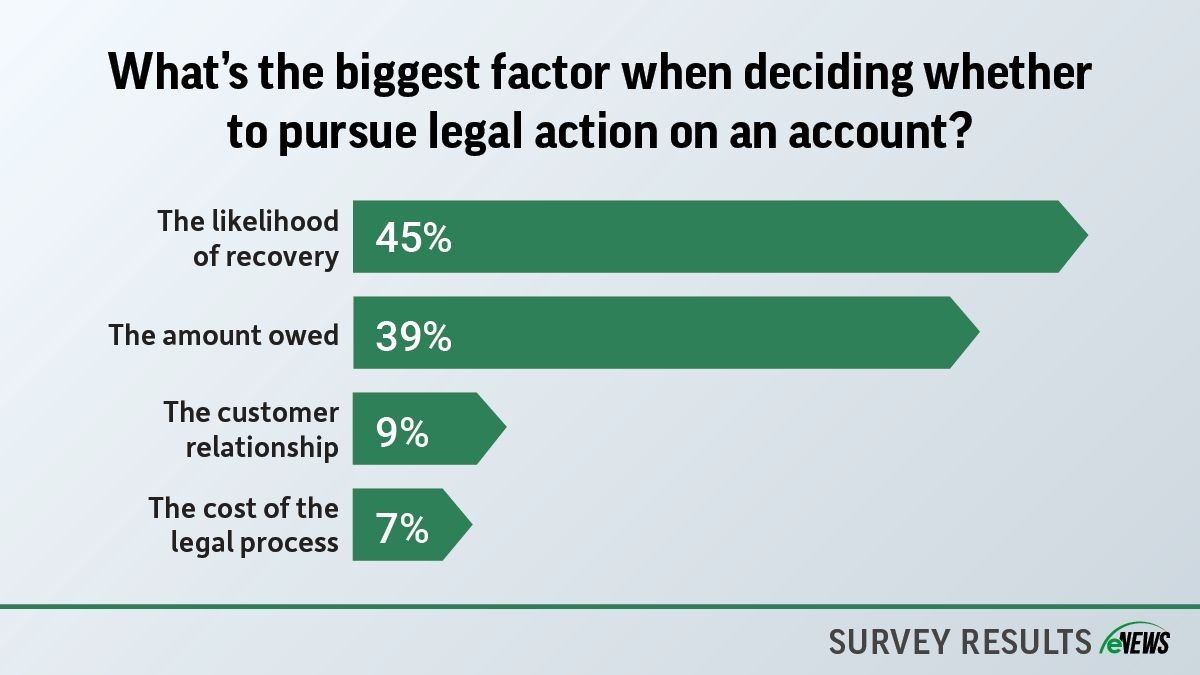Business Practices, eNews, Technology
Rising fraud risks in B2B trade

Automation and technological advancements have gained a significant presence in everyday credit processes—whether to provide easier ways to receive payments, communication with customers or overall efficiency. However, technological innovations always come with risk.
Why it matters: One of the fastest-growing risk factors for B2B trade today is fraud because the integration of technology in the past decade has made fraud a much easier crime to commit through email phishing, forged digital documents, identity theft and more.
By the numbers:
- 27% of credit professionals estimate that their company loses more than $1 million each year due to the inability to obtain sufficient customer information.
- 44% of credit professionals have seen an increase in fraud attempts from new customers filling out credit applications.
- Nearly 60% of B2B credit managers have experienced a customer fraudulently dispute a credit card charge.
Did you know? Fraud can present itself in many different forms and often goes undetected. Once a fraudster is successful in infiltrating a company, it takes nearly half of all businesses one month to discover the fraud. Some of the most common forms of fraud in 2024 include:
- Identity fraud: Fraudsters can create fake identities by stealing, modifying or buying them on the dark web. For example, a fraudster may try to convince customers to change bank account information for the money to be wired to an incorrect account number.
- Phishing scams: As one of the most popular forms of communication in the work world, email provides an instant way to get your message across and conduct business. Almost all workplaces use the tool to communicate internally and externally. However, fraudsters will use this to their advantage.
- Credit card chargebacks: As credit card payments become more common in B2B trade, credit professionals are more at risk for fraudsters to steal money. If a customer asks for chargebacks (a charge returned to the payer after they flag an item on their account), they can claim that the goods never arrived or that the product was not authorized by them. Fraudsters can use a fake card to make it appear as though the money went through, but they are getting money back that was never sent. This makes it harder for creditors to collect on disputes.
- Bust-out fraud: Some customers will build trust by completing several small transactions over a period and then request a large transaction that was their goal all along—known as bust-out fraud or sleeper fraud. The fraudster makes on-time payments to maintain a good account standing with the intent of bouncing a final payment and abandoning the account. During the process, the fraudster builds up a history of good behavior with timely payments and low utilization. Over time, the fraudster obtains additional lines of credit and requests higher credit limits. Eventually, the fraudster uses all available credit and stops making payments. Overpayments with bad checks are often made in the final stage of the bust-out, temporarily inflating the credit limit and causing losses greater than the account credit limit.
What they’re saying: Tracy Mitchell, CBA, AR senior team lead at Trinity Logistics (Seaford, DE), said that a fraudster had stolen the identity of one of their customers during a transaction with her company. “The email domain of the fraudulent customer was only three letters off,” Mitchell said during a live 2024 Credit Congress session Minimizing Supply Chain Fraud. “People can only commit fraud where there’s a gap that allows them to do that. Process gaps and insufficient security in your technology put you at the highest risk, so if there’s a lack of checks and balances, you’re setting yourself up for fraud.”
As technology continues to advance, credit professionals must remain vigilant in implementing robust security measures to combat the growing threat of fraud in B2B trade. “It’s not a matter of if, but when you will get hit,” Steve Winn, corporate credit manager at Marek Brothers Systems LLC (Houston, TX), said during a Credit Congress session Something Smells Phishy: Cybersecurity Is a Credit Problem. “Before, you could easily spot a phishing email by knowing the logo was fake—but now you have to dig deeper, see if the links match up or if you were expecting the email to begin with.”
Fraud committed through cybercrimes does not grant your company immunity. Some companies can be contractually liable if their customers’ data is breached through phishing emails. “Safeguarding assets and preserving reputation is paramount,” said Winn. “Companies must proactively stay ahead of potential threats.”
The bottom line: No matter which industry you are in, fraudsters can and will attack your company through any angle. It is up to credit managers to prioritize cybersecurity measures and fraud prevention strategies.
If you are interested in learning more, download NACM’s latest white paper on The Evolving Threat of Fraud in B2B Trade.





